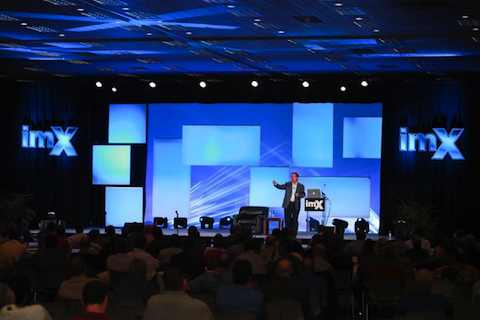I had a long conversation with a potential client in the manufacturing sector the other day; they’re looking to bring me in for a keynote in 2016. I’ve developed a reputation in the industry for some cutting edge insight into the key trends that are redefining every single aspect of the sector at an extremely furious, fast pace. I’ve headlined events for tens of thousands at major manufacturing conferences in Las Vegas, Chicago, Orlando and Detroit.

What’s going on? Here’s a quick snapshot:
- collapsing product life cycles – simply put, products don’t have as long a lifespan in terms of relevance, consumer attention, rapid escalation of design ideas — whatever the case may be, with shorter life spans, manufacturing organizations are having to pick up the pace!
- the Internet of Things and product redefinition – every device becomes connected, intelligent, aware… this has major implications in terms of how devices are designed and manufactured. Suddenly, many manufacturers are finding that they must integrate sophisticated user interface capabilities into their products, not to mention advanced computer and connectivity technology.
- rapid design and rapid prototyping. We’ve seen incredible advances in the ability to conceive, design and develop new products faster than ever before. There is a constantly rising bar in terms of capabilities, and if you can’t pick up on this, you can be sure that your competitors will. The first to market with a new idea is often the winner.
- the influence of crowdfunding on product design. There is no doubt that the global connectivity that the crowdfunding business model provides is resulting in a change in product conception. Suddenly, anyone can have an idea, fund it, design it, and bring it to market. What I’ve witnessed are situations where these small scale projects are light years ahead of what we’ve seen with established industry players. Crowdfunding is the new garage in many industries.
- build to demand vs. build to inventory business models. Big auto companies build hundreds of thousands of vehicles, and shove them out to dealers hoping they sell. Tesla Motors takes an order, and builds the vehicle to send to the customer. Big difference — and this model is driving fundamental business model change across every aspect of the manufacturing sector.
- agility and flexibility. The impact of build-to-demand models is that manufacturers must provide for a lot more change-capability throughout every aspect of the process, from supply chain to assembly to quality control. The ultimate in agility? The Magna factory in Graz, Austria, which can custom build a wide variety of automobiles from completely different car companies.
- post-flat strategies. What happens when the world gets flat? Put a ripple in it! That’s been the focus of a few of my keynotes for several manufacturing clients. I’ve spoken about organizations who have evolved from having to compete with low-cost producers by focusing on price, to a new product lineup that is based on quality, consumer perception, brand identity, or IoT connectivity.
- faster time to market. Consumers today have perilously short attention spans. In some sectors, such as fashion, high-tech (smartphones!), food and others, you’ve got to get your product to market in an instant — otherwise, you lose your opportunity.
- rapidly emerging consumer demand. Closely related to time to market is the fact that new fashion, taste trends or other concepts now emerge faster given the impact of social networks. Think about the impact of food trucks — people can now experiment with new taste trends at an extremely low price point. The result is that new taste trends emerge faster — and food companies must scramble to get new products out to the customer faster. Long, luxurious product development lead times are from ‘the olden days.’ If you can’t speed up, you won’t be able to compete.
- the fast emergence of same day delivery business models. Amazon, WalMart, Google and others are quickly building big infrastructure that provides for same day shipping. This has a ripple impact on demand, inventory, logistics …. a massive change from the old world of stockpiled inventory.
- the arrival of 3D, additive manufacturing 3D printers and the inevitable shift to “additive manufacturing” from “subtractive manufacturing based on cutting, drilling and bashing metal.. probably the biggest change the industry will witness in coming years.
- the acceleration of education requirements. Robotics, advanced manufacturing methodologies, machinining-in-the-cloud, advanced ERP processes : you name it, the skill of 10 years or even 5 years ago doesn’t cut it today. I had one client in the robotics sector observe that “the education level of our workforce has increased so much….The machinists in this industry do trigonometry in their heads.” That’s the new reality going forward!
That’s a lot of change, and there’s even more underway.




GET IN TOUCH
Jim's Facebook page
You'll find Jim's latest videos on Youtube
Mastodon. What's on Jim's mind? Check his feed!
LinkedIn - reach out to Jim for a professional connection!
Flickr! Get inspired! A massive archive of all of Jim's daily inspirational quotes!
Instagram - the home for Jim's motivational mind!